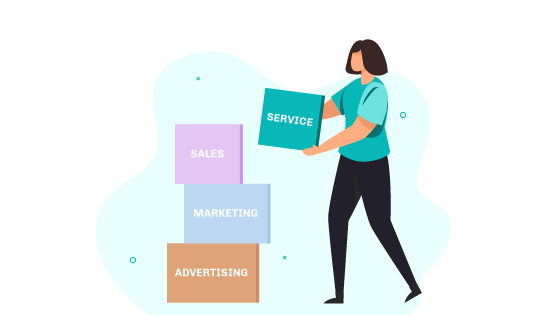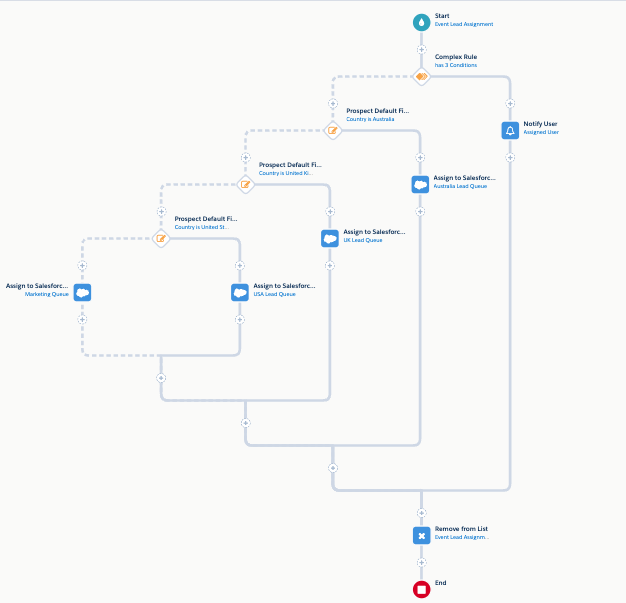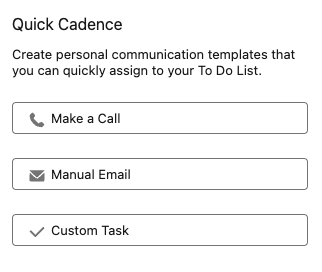What Does a MarTech Solution Architect Do? [Interview]
- June 20, 2023
- Pardot Careers, Salesforce Ben | The Drip

Marketing Technology Architects help organizations get more usage and mileage out of the tools and technologies they use. It’s a career path that’s picking up pace – but, what do they actually do? It’s a really great question!
That’s why Saniul Ali, Marketing Solution Architect, joined me for this conversation. We’ll discuss what MarTech Solution Architects do, why they’re needed, and reflect on the path that will help to transition you into this career.
What is the Role of a Marketing Technology Architect?
Saniul: MarTech (Marketing Technology) is focused more on the strategy around the business, and architecting that across different technologies, and different business functions – which happens to be for the benefit of marketing initiatives.
Lucy: Marketing Technology Architects clearly have a lot to offer to organizations who are looking to consolidate their tech stack.
Where do you work – are you working for an end-user (so, a customer of Salesforce), or are you on the consulting side?
Saniul: I’m on the consulting side. I work at Brightgen heading up their MarTech practice and also a Principal Solution Architect, which means I work on the client side. To gain more exposure to the wider scene, consultancy offers that.
Lucy: There was one fact floating around some years ago that 85% of Salesforce Solution Architects work at Salesforce consulting partners (although not strictly the role we are talking about here). So that makes total sense why you decided to take the consultancy route. I wanted to ask the question because you can find Salesforce MarTech Architects on both sides (i.e. consultancy or end-user).
Why Are MarTech Architects Required?
Saniul: I would say, even less than four years ago, this role didn’t exist the way it does now. It started off more platform based – for example, you’re a Pardot (Account Engagement) Consultant – but over the years as the uptake of emerging technologies has grown, the demand for MarTech Solution Architects has grown in relation.
There are too many tools and platforms. There are various stakeholders. You may have a CTO, CIO, CMO; and all of these individuals, each have their own objectives. Where the need comes in is being able to bring together different individuals, from different functions, and have them reading off the same page – almost like they’re investing into the same savings account.
That’s an art in itself. It could take between 6-2 months just to get this done. This is where MarTech Solution Architects come in – for communicating the strategy and engaging the C-suite.

Lucy: That totally makes sense. Organizations are being asked to move faster, and so there’s potential for friction between all of these ‘actors’ (i.e. C-suite stakeholders), each with their own motivations. You mentioned expanding tech stacks, and there are also larger data volumes running through those tech stacks.
Saniul: There can be a CMO vs. the CTO vs. the CIO scenario. Here’s a dilemma: they can all help each other (for example, the CIO wants to help the CMO) but they don’t know how to start.
This is when the CMO may reach out to a Solution Architect, and ask for help engaging everyone at the C-suite level. At first, not by proposing solutions, or discussing the capabilities of tools, but more about advice on how to approach the conversation.
Lucy: Further to your point, there’s a cliché that the marketing function is a cost center. The CMO, in some organizations, may not be taken as seriously. So, it’s about putting marketing technology ‘on the map’ for that organization.
What is the Future of the MarTech Architect Role?
Saniul: First off, is the term ‘MarTech’ – it suddenly turned into a buzzword. Apparently everyone is a ‘MarTech expert’ even though they may only work with one platform. I reckon that word will fizzle out. I would also say that it’s misleading because the need around it is to focus on customer centricity. Any product that’s focusing on the customer first, happens to be a marketing goal, and they classify it as martech, but really, it could a BI platform, CRM, anything really – it just depends on how you use it.
Also, the demand across customer centricity will be huge. I think that in the next five years, almost every organization will need to have an individual who says, “I’m here to look after customers. Tell me what you need from the technology”. Compare this to now, where it’s viewed from an organization’s perspective: “How do we make more money?”. The questions should be: “How do we get more value to the customer, and in return, gain revenue”.
What Trends are Advancing (or Driving) the MarTech Architect Role?
Saniul: First, emerging technologies. A good example is TikTok. Around three years ago, I saw someone posting a video of them singing, and I was thinking, “what kind of app is this?!”. Now, it’s one of the biggest apps, and everyone wants to get on to it. With these popular platforms, you’ve got to invest the time to keep building integrations. There will always be trends based on emerging technologies – happening at a really rapid pace. Organizations attempt to grow with the pace of the market, but the key will be to seamlessly connect those data sources and be able to do targeting.
Second, the hybrid-first approach. Pre-COVID, there was an emphasis on everything being on-site, for example, you have to be on-site to do a job. Post-COVID, so much more is digital, and organizations have gone back to an open market. So there’s a hybrid-first model, where people are expecting offline experiences to reflect digital experiences, and vice versa.
If you were to speak to different functions, your communication needs to keep up with the pace. For example, if I’m speaking to the marketing team, sales team, and the service team, I want to be informing them about what’s been done as a group, as opposed to informing them of what I just told their colleagues. Connect data sources, and be able to personalize different touchpoints in the expanding, ever-changing, technology landscape.
Next, privacy. I recently attended the LXA (formerly MarTech Alliance) event. Everyone is talking about these emerging technologies (almost like ‘shiny object’ syndrome), however, I think that not enough people are paying attention to privacy. The more digital first-party data you’re collecting, the more privacy is a need. People expect privacy, and meeting the standards is essential – in other words, they’re not going to be thanking you for meeting the bare minimum. While it’s not a ‘hot’ trend, privacy does need to be a trend because, eventually, it will come back to bite companies. Let’s say we have 28 technologies all connected, all generating first-party data; however, if consent management isn’t in place, that company is open to so many complaints.
Finally, I discovered a gamification company at an event I attended recently (Playable). People’s attention spans are shorter. It’s becoming more difficult to keep many people engaged. A gamification platform keeps people engaged by rewarding their interactions, especially how long they are engaging. It’s a proven success, but it’s early days. Remember that even though this started out as a Gen Z trait, members of that generation will become new decision makers, and new influencers, in purchases. So, I think gamification in marketing is something that will ‘blow up’.

Lucy: That will be very interesting, to have a board full of people with short attention spans. But it affirms that what matters happens in seconds, not hours.
A thread that was pulling all of those trends together, is the ability for organizations to pivot. You need to have a handle on those systems. Like you said, to add new technologies, you (likely) need to connect them with APIs which could be subject to change, themselves. Also, with privacy – being able to pivot, and being assured that your privacy frameworks are all intact.
Saniul: While I mentioned those items, there is something that interacts with everything, and is highly undervalued. And that’s change management. People are talking about ‘process’ and ‘platforms’ while often forgetting ‘people’. When it comes to technology, the order mostly goes “we look at the platform, fit process into it, and then we’ll train up the people”, when in reality, it should be “make sure the people understand why the technology is needed, then the platform and process should be made to apply for the people”. That’s a change management skill in itself!
I wouldn’t say I’m a change management expert, however, there are people that I’ve learned from. I’ve seen the power of change management. At first I thought: “That’s really irritating, let me do my job”, but afterwards I thought: “Wow. I see the value in this”.
Lucy: Change management (and adoption) are often the ‘last hurdle’ that people fall down because you can’t take the project (and/or implementation) to success without it being adopted. Change management was one of the key factors that came up in the tips to advance your career (in the Salesforce Consultant Salary Guide). And for consultants who are budding Solution Architects, change management is one factor we highlighted. So, why not? It definitely translates to the marketing space as well.
Functional Consultant vs. Solution Architect?
Saniul: When I previously worked as a Pardot (Account Engagement) Consultant, we were learning one platform, and being the key expert at that platform. I felt like I needed to know everything about it and ahead of the trends in that particular platform. At that point, we were quite ‘fresh’ but we were experts in that area, doing complex things using that platform. The consultant creates programs of work, for example, these are the capabilities we can deliver in quarter one.
Whereas, the MarTech Solution Architect comes in from a strategic perspective, as the oracle for a business. So, if you have a customer data platform (CDP), marketing automation platform, CRM, consent management platform, and other tools in the mix, the MarTech Solution Architect will bring them together. While they’re not an expert in any of those platforms, they’ll be able to strategize, i.e. aligning strategy with technology, and being great at engaging with people, building relationships, documentation, and ensuring sign-off happens in the correct order. In fact, it’s an art.
But then, in the engagements I’m involved in, we have consultants for each platform (Marketing Cloud, Pardot aka. Account Engagement) and so, I will always confer with each one of them. “This is what I’m thinking”, in a broad approach, and ask “Can you spec this out for me? Is there anything I need to be aware of, such as new features being released or something being retired? Are there limitations?”. They’ll inform me, and I’ll feed that back into the strategy, relay it back to the business, and reply on the behalf of stakeholders. This streamlines communication because stakeholders don’t need to discuss it with multiple consultants, instead, just through the Solution Architect.
You need both. As a Solution Architect, I would struggle without the consultants – I’d be so stressed, I’d probably leave!
Back in time, we worked with one individual, who had the MarTech Architect role. We worked well together in consultant-architect exchanges – and it’s from him that I found out about the architect path.
Lucy: That’s so true because you need the breadth and the depth. It’s a mutually beneficial working relationship. And we say this: that it’s impossible to keep up with both, say Pardot (Account Engagement) and Marketing Cloud. It’s an impossible feat to ask a consultant to be an ‘expert’ in five technologies.
How Do Salesforce Architects Help Solve Business Issues?
Lucy: I saw an interesting fact the other day, according to IDC, companies suffer from up to 30% loss in revenue due to lead inefficiencies – purely lead inefficiencies – so, how do architects start to solve some of these issues?
Saniul: I think the 30% quoted is lower than it should be. It comes down to what I mentioned before, different functions (marketing, sales, service) are not speaking to each other enough. The common issue at the moment is that people think this is a linear process. Let’s say you’ve got advertising, then marketing, sales, service. There’s a funnel approach – a dependency order – but that’s a false sense of operations. They should be stacked up on top of each other, rather than moving in a line left to right.
Stacked up on each other, it encourages discussion, “this is what we’re trying to achieve. Let’s put our requirements together”. By doing that, you’re capturing any inefficiencies. Service may say, “we’re having to ask for XYZ”, and advertising may say, “we’re already asking for XYZ, why do you need to?”, and marketing chimes in, “we didn’t know you needed XYZ, we can easily put that data into our marketing automation platform”. Sales could approach the conversation by remarking on a particular field of interest to them that would support their qualification efforts (e.g grading).
This is a fine example of stacking it together, with multiple check-ins. Instead, what’s typically happening is that these teams report to each other, saying: “this is what we’re doing”. As a result, they could get challenged, and get protective. If they had approached this together, and not as different functions, then they could capture more intel, just by speaking to each other.

Lucy: Yes, it’s been said over and over, but having joint metrics is the one way to bring teams together (“north star” metrics) otherwise there’s a culture of ‘every wo/man for themselves’.
What I loved about the stacking, is because it’s not linear. Even before the prospective customer’s data is captured, they could have used a chatbot on the website to ask questions about the product/service, which could be in service’s remit to supply those answers to common questions. I wouldn’t go as far as calling it a ‘jumbled mess’, but it’s certainly not linear.
Another topic we spoke about previously is that we don’t want to confuse the job market. What we mean by this is that job titles can be easily misinterpreted. Plus, it’s not that a senior consultant will naturally progress into a Solution Architect role, because there’s more to it than simply time spent in the role.
Is MarTech Architect a ‘Step Up’?
Lucy: So, the step up, in my opinion, is that you need to work at a higher level – not only cross-cloud across the Salesforce platform, but even working with technologies beyond the Salesforce platform (rather than being centered in one place). What are your thoughts there?
Saniul: First of all, I agree with that statement. You will have a domain specialization, for example, if you spent five plus years building your skill set. The steps to transition over to a Solution Architect would be learning strategy – different types of strategies, dependent on different business models. When you’re working consultancy-side, you can come across many business models. A client may ask “how can this apply to our business model?”, and you need to know how to answer.
Also, transitioning into more frameworks; leverage frameworks whenever you’re trying to articulate something, to tell it in a storytelling format. There could be people in the room that have no idea about what particular marketing terminology, so you must simplify by using frameworks that make concepts easy to explain. Personally, I’ve got lots of frameworks which I pull from. It also helps with getting everyone on board.
Another aspect is to finesse your documentation. You’re creating process maps, technical designs, and artifacts.
Lucy: I remembered something, from back all those years ago when we worked together on that project, I said to you: “This is some of the best documentation I’ve ever seen!” So yes, that’s definitely one way to get to Solution Architect!
Saniul: I wasn’t sure if you’d remember that! I shared that feedback with all of my colleagues, and they probably thought I was getting big-headed. In that particular project, we were delivering eleven marketing journeys, and you were freelance coming into the project short notice, so I wanted to ensure that we could work together effectively as a team with transparency. If you have everything you need, you can do what you need to do, and add value.
Lucy: Well, documentation is no one’s favorite job, so the fact you nailed it early on, is a great sign.
Saniul: So yes, there are multiple components – cross-cloud awareness, learning different types of strategies (dependent on business models), building frameworks to reuse, and finesse documentation – but in some ways, they could all come together accidentally. Being forced into taking up a project, you’ll be learning so much ‘on the job’, and just grow from there. The MarTech Solution Architects I’ve met share that story line in common.
Lucy: That’s all true – it’s not a role you ‘book learn’ for. You don’t only sit through, say a certification, and come out as a fully-fledged Solution Architect. It takes experience, which is why I think it is a natural step from being a consultant, but not a given.
Summary
Solution Architects make it easy for anyone to ‘jump in’ and understand what’s going on. They bring together different individuals, from different functions, and have them reading off the same page. Their role is focused on the strategy around the business, and architecting that across different technologies, and different business functions. Because of trends such as emerging technologies and change management, the role is advancing – and entirely necessary.
This Pardot article written by:
Salesforce Ben | The Drip
Lucy Mazalon is the Head Editor & Operations Director at Salesforceben.com, Founder of THE DRIP and Salesforce Marketing Champion 2020.
Original Pardot Article: https://www.salesforceben.com/the-drip/what-does-a-martech-solution-architect-do/
Find more great Pardot articles at www.salesforceben.com/the-drip/
Pardot Experts Blog
We have categorized all the different Pardot articles by topics.
Pardot Topic Categories
- Account Based Marketing (ABM) (7)
- Business Units (14)
- ChatGPT / AI (3)
- Completion Actions (5)
- Connectors (10)
- Custom Redirects (4)
- Data Cloud (2)
- Demand Generation (8)
- Dynamic Content (6)
- Einstein Features (12)
- Email Delivery (17)
- Email Open Rates (3)
- Pardot A/B Testing (2)
- Email Mailability (16)
- Do Not Email (1)
- Double Opt-in (2)
- Opt Out / Unsubscribe (14)
- Email Preferences Page (6)
- Engagement Studio (16)
- Industries (1)
- Non Profit (1)
- Landing Pages (9)
- Lead Generation (1)
- Lead Management (13)
- Lead Routing (3)
- Lead Scoring (16)
- Leads (3)
- Marketing Analytics – B2BMA (9)
- Marketing Automation (1)
- Marketing Cloud (3)
- Marketing Cloud Account Engagement (4)
- Marketing Cloud Growth (2)
- New Pardot Features (6)
- Opportunities (2)
- Optimization (2)
- Pardot Admin (64)
- Duplicates (1)
- Marketing Ops (1)
- Pardot Alerts (1)
- Pardot API (2)
- Pardot Automations (3)
- Pardot Careers (12)
- Pardot Certifications (4)
- Pardot Consulting (1)
- Pardot Cookies (3)
- Pardot Custom Objects (3)
- Pardot Email Builder (8)
- Pardot Email Templates (9)
- HML (6)
- Pardot Events (16)
- Pardot External Actions (1)
- Pardot External Activities (4)
- Pardot Forms (29)
- Form Handlers (8)
- Pardot Integrations (20)
- Data Cloud (1)
- Slack (1)
- Pardot Lead Grading (5)
- Pardot Lead Source (2)
- Pardot Lightning (1)
- Pardot Migration (1)
- Pardot Nurture / Drip Campaigns (1)
- Pardot Personalization (3)
- Pardot Profiles (1)
- Pardot Releases (18)
- Pardot Sandboxes (2)
- Pardot Segmentation (5)
- Pardot Strategy (7)
- Pardot Sync (2)
- Pardot Sync Errors (1)
- Pardot Tracker Domains (5)
- Pardot Training (3)
- Pardot Vs Other MAPs (4)
- Pardot Website Tracking (2)
- Reporting (22)
- Salesforce and Pardot (31)
- Marketing Data Sharing (2)
- Pardot Users (3)
- Salesforce Automation (5)
- Salesforce Flows (2)
- Salesforce Campaigns (20)
- Salesforce CRM (3)
- Record Types (1)
- Salesforce Engage (3)
- Salesforce Queues (2)
- Security and Privacy (1)
- Tags (3)
- The Authors (504)
- Cheshire Impact (9)
- Greenkey Digital (51)
- Invado Solutions (37)
- Jenna Molby (9)
- Marcloud Consulting (6)
- Nebula Consulting (60)
- Pardot Geeks (44)
- Salesforce Ben | The Drip (235)
- SalesLabX (3)
- Slalom (4)
- Unfettered Marketing (46)
- Uncategorized (1)
- Website Tracking (2)
- Website Search (1)
More Pardot Articles
See all posts
This Pardot article written by:
Salesforce Ben | The Drip
Lucy Mazalon is the Head Editor & Operations Director at Salesforceben.com, Founder of THE DRIP and Salesforce Marketing Champion 2020.
Original Pardot Article: https://www.salesforceben.com/the-drip/what-does-a-martech-solution-architect-do/
Find more great Pardot articles at www.salesforceben.com/the-drip/





